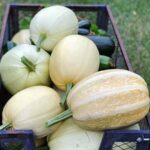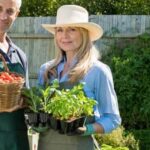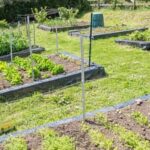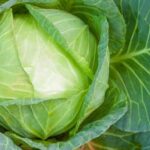Are you looking to grow vegetables for small gardens? Small space gardening offers a host of benefits, including the ability to cultivate fresh produce even in limited areas. However, it also presents its own set of challenges and opportunities. In this article, we will explore the world of small garden vegetables, offering insights on the best types of plants to choose, how to maximize space, and tips for successful cultivation.
One of the most important aspects of small space gardening is selecting the right vegetables. With strategic planning and space optimization techniques, even the smallest of areas can yield impressive harvests. We will delve into the advantages and challenges of small garden vegetable cultivation while introducing the concept of companion planting and vertical gardening to make the most out of limited space.
Whether you have a balcony, patio, or tiny backyard, there are creative solutions for growing your own produce. From choosing compact varieties to utilizing container gardening and vertical structures, we will explore different methods for maximizing space in small gardens. By understanding seasonal planting and succession planting, you can ensure continuous harvests throughout the year while learning about maintenance and care practices for successful growth in confined spaces.
Planning and Space Optimization
When it comes to growing vegetables for small gardens, strategic planning and space optimization are key to successful gardening. Fortunately, there are several ways to maximize limited garden space and still enjoy a bountiful harvest. Here are some tips for planning and optimizing space for vegetable planting:
1. Utilize Raised Beds: Raised beds are an excellent solution for small garden spaces as they provide better soil drainage and can help prevent overcrowding of plants. They also allow for easier maintenance and offer more control over the growing conditions. Consider building or purchasing raised beds to make the most of your small garden area.
2. Intensive Planting: To make the most out of limited space, consider practicing intensive planting techniques. This involves planting vegetables closer together than traditionally recommended, taking advantage of every inch of available space. However, it’s important to ensure that plants do not shade each other excessively, so research the spacing requirements for each vegetable.
3. Vertical Gardening: Another effective method for space optimization in small gardens is vertical gardening. This involves growing plants upwards instead of outwards, using structures like trellises, fences, or walls to support vining crops such as cucumbers, peas, and beans. Vertical gardening not only saves ground space but also adds visual interest to your garden.
By strategically planning your small garden layout and utilizing these space optimization techniques, you can grow a wide variety of vegetables without needing a large plot of land.
Best Vegetables for Small Gardens
Small gardens provide a unique opportunity for growing a variety of vegetables, despite limited space. Choosing the right vegetables for small gardens is crucial to ensure a bountiful harvest and maximum utilization of the available space. When selecting vegetables for small gardens, it’s essential to consider their growth habits, yield potential, and adaptability to confined spaces.
Compact Varieties and High-Yielding Options
When it comes to small garden vegetables, opting for compact varieties and high-yielding options is key. Compact varieties are specifically bred to thrive in smaller spaces, making them ideal for container gardening or raised beds. Examples of compact vegetable varieties include patio tomatoes, dwarf cucumbers, bush beans, and mini bell peppers. Additionally, high-yielding options such as cherry tomatoes, salad greens, and snap peas can provide abundant harvests within limited square footage.
Ideal Growing Conditions
In addition to choosing compact varieties and high-yielding options, it’s important to consider the ideal growing conditions for each vegetable in a small garden setting. Factors such as sunlight requirements, soil preferences, and water needs should be taken into account when planning the vegetable selection.
For example, leafy greens like lettuce and spinach thrive in partial shade, while tomatoes and peppers require full sun exposure. Understanding the specific needs of each vegetable will help maximize productivity in a small garden space.
Strategic Planting
Strategic planting is essential for small garden vegetables to make the most of limited space. Succession planting, intercropping, and square foot gardening techniques can all be employed to optimize the yield from a small garden plot. By carefully planning the layout and timing of vegetable plantings, it’s possible to achieve continuous harvests throughout the growing season. Additionally, utilizing vertical space through trellising or vertical gardening structures can further increase the capacity for growing vegetables in small gardens.
Container Gardening
Growing Vegetables in Containers
When choosing vegetables for small gardens, it’s important to select varieties that are well-suited for container gardening. Compact and bushy plants like cherry tomatoes, peppers, lettuce, and herbs thrive in containers. Root vegetables like carrots and radishes also do well in deep pots with good drainage. It’s essential to consider the mature size of the plant when selecting containers and choose pots that are large enough to accommodate their root systems.
Choosing the Right Containers
Selecting the right containers is crucial for successful vegetable growth. Opt for pots or planters made of durable materials like plastic, wood, or ceramic that provide adequate drainage holes at the bottom. Ensure that the containers are large enough to support the chosen vegetables and allow space for root development. Additionally, consider using hanging baskets or vertical planters to maximize space in small garden areas.
Soil and Maintenance Tips
Using high-quality potting mix is essential for container gardening as it provides proper nutrients and drainage necessary for healthy plant growth. Regular watering is crucial since containers tend to dry out faster than open ground; ensure that your vegetable plants receive adequate moisture throughout their growing season. Moreover, employing organic fertilizers specifically formulated for container plants can help maintain soil fertility without overpowering limited space with heavy odors.
Overall, container gardening offers an efficient way to cultivate a variety of vegetables in small spaces while allowing flexibility and mobility within your garden setup.
Companion Planting in Small Gardens
Companion planting is a gardening method that involves planting different types of plants in close proximity to one another for the purpose of maximizing space, improving crop health, and deterring pests. This practice is particularly beneficial for small gardens, where space optimization is crucial for successful vegetable cultivation.
When it comes to companion planting in small gardens, there are several combinations of vegetables that work well together. For example:
- Planting tomatoes with basil can enhance the flavor of the tomatoes and repel certain pests that may be harmful to both plants.
- Pairing carrots with onions can help deter carrot rust fly and onion maggot, leading to healthier crops.
- Growing lettuce between rows of tall vegetables like beans or corn can provide shade and protection from excessive heat, resulting in better quality lettuce.
In addition to pest control and maximizing space, companion planting also offers the added benefit of improving soil fertility through the concept of mutual support among different plant species. For instance, legumes such as peas and beans have nitrogen-fixing properties that can benefit neighboring plants by enriching the soil with essential nutrients.
Overall, incorporating companion planting into small garden vegetable cultivation not only allows for efficient use of limited space but also promotes healthier crops and sustainable gardening practices. By carefully planning which vegetables to plant alongside each other, small garden enthusiasts can make the most out of their available space while reaping the benefits of diverse and thriving vegetable yields.
Vertical Gardening for Small Spaces
When it comes to maximizing limited garden space, vertical gardening offers a practical and innovative solution. With the rising popularity of small-space gardening, more and more gardeners are turning to vertical growing methods to make the most of their available area. Vertical gardening involves utilizing walls, trellises, fences, and other vertical structures to create productive growing spaces for vegetables.
One of the key advantages of vertical gardening for small spaces is the ability to grow a wide variety of vegetables without taking up precious ground space. This method not only allows for an abundant harvest in a compact area but also adds visual interest to the garden with lush greenery climbing up walls or cascading down from hanging containers. It also provides an opportunity for creative expression through unique and aesthetically pleasing garden designs.
For those looking to dive into vertical gardening for small gardens, it’s essential to carefully plan and strategize the layout. Consider factors such as sunlight exposure, weight capacity of structures, and proper irrigation systems. By selecting the right vegetables for vertical growth and implementing smart planting techniques, gardeners can enjoy a bountiful harvest from even the smallest of spaces.
In addition to providing practical solutions for limited space, vertical gardening also offers benefits such as improved air circulation around plants, easy access for maintenance and harvesting, and better utilization of natural light. Ultimately, this innovative approach can turn any petite garden into a thriving oasis of greenery and homegrown produce.
Seasonal Planting and Succession Planting
When it comes to maximizing the potential of vegetables for small gardens, understanding the importance of seasonal planting and succession planting is crucial. Seasonal planting involves selecting and growing vegetables that are suitable for the specific season, ensuring that they have the best conditions to thrive. On the other hand, succession planting allows for a continuous harvest by staggering plantings of the same or different crops.
By carefully planning out seasonal planting, small gardeners can take full advantage of their limited space by rotating crops throughout the year and optimizing their yields. For example, cool-season vegetables such as lettuce, spinach, and radishes can be planted in early spring and again in late summer for a fall harvest. On the other hand, warm-season vegetables like tomatoes, peppers, and cucumbers can be planted after the last frost for a summer harvest.
Succession planting involves sowing new seeds or transplanting seedlings at regular intervals to ensure a continuous supply of fresh produce. This approach is especially beneficial for small gardens where space is limited but productivity needs to be maximized. For instance, instead of planting an entire row of lettuce at once, gardeners can plant a few seeds every week to prolong the harvesting period.
Using these techniques can not only provide a more diverse range of fresh produce throughout the year but also help prevent overcrowding in small garden spaces. The key to successful seasonal and succession planting is thoughtful planning and strategic scheduling according to local climate conditions.
| Seasonal Planting | Succession Planting |
|---|---|
| Cool-season: lettuce, spinach, radishes | Regular intervals for continuous harvest |
| Warm-season: tomatoes, peppers, cucumbers | Prolonged harvesting period |
Maintenance and Care for Small Garden Vegetables
In conclusion, growing vegetables in small gardens can be a rewarding and fulfilling experience for any gardener. With strategic planning and space optimization, even the smallest of spaces can yield a bountiful harvest of delicious and nutritious produce. By choosing the right vegetables for small gardens, such as compact varieties and high-yielding options, gardeners can make the most of their limited space while enjoying an abundance of homegrown goodness.
Container gardening is particularly well-suited for small garden spaces, offering a flexible and convenient way to grow vegetables. With the right containers and soil, gardeners can successfully cultivate a wide variety of vegetables, maximizing their limited space without sacrificing quality or yield. Additionally, companion planting and vertical gardening techniques offer innovative solutions for small garden vegetable cultivation, promoting efficient use of space while improving crop health and productivity.
Throughout the growing season, it’s important to practice maintenance and care for small garden vegetables to ensure optimal growth and productivity. From watering and fertilizing to pest control and harvesting, attentive care is crucial for successful vegetable cultivation in limited spaces.
By following these tips and insights, gardeners can transform their small gardens into thriving oases of fresh, homegrown vegetables all season long. With the right approach and dedication, anyone can enjoy a fruitful harvest from their small garden plot.
Frequently Asked Questions
What Vegetables Are Good for Small Spaces?
Vegetables that are good for small spaces include cherry tomatoes, lettuce, radishes, green onions, and peppers. These compact plants can thrive in containers or small garden plots, making them perfect for limited space.
What Vegetables Can I Grow in a Small Raised Bed?
In a small raised bed, you can grow vegetables like spinach, carrots, kale, garlic, and herbs such as basil and cilantro. These plants do not require a lot of space to spread out their roots and can be easily managed in a confined area.
What Vegetables Take the Least Amount of Space to Grow?
Some vegetables that take the least amount of space to grow include microgreens, which can be grown indoors on a windowsill or countertop. Additionally, varieties of dwarf or bushy plants such as dwarf beans or compact cucumber plants also require minimal space to flourish.

If you’re looking to get into vegetable gardening, or are just looking for some tips on how to make your current garden better, then you’ve come to the right place! My name is Ethel and I have been gardening for years. In this blog, I’m going to share with you some of my best tips on how to create a successful vegetable garden.





